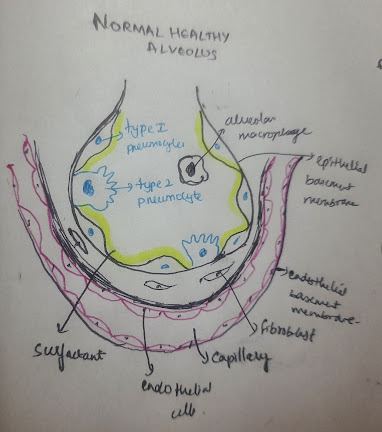OSCE- PREFINALS DEC 2023:
Case report :
I have tried to answer some of the questions regarding case discussion of our patient
1. How to clinically differentiate between coarse and fine crepitations ?
Ans- well, crepitations or crackles are adventitious respiratory sounds which occur when an obstructed airway due to accumulated secretions opens in inspiratory phase.
The sudden opening of an obstructed airway causes an immediate re-equilibration of the pressures on both sides creating vibrations in the airway walls.
Fine crackles --
A). having a short duration and a higher pitch, Often, fine crackles are repetitive, originate in the basal part of the lung, and not altered by coughing.
B) Coarse crackles appear to be a longer duration and a lower pitch.
There is no specific location from where coarse crackles primarily originate. They are often altered by coughing.
2. Why are bronchial breath sounds heard in lung fields on ascultation in this case and how to clinically differentiate between normal vesicular ans bronchial breath sounds?
Ans-- Bronchial breath sounds in the lung fields are heard in our patient due to consolidation secondary to hospital acquired pneumonia.
Normal vesicular breath sounds are :
Soft, low pitched, and rustling in quality
a) Inspiratory phase remains longer than the expiratory phase
b) Inspiration is higher pitch than expiration
c) No pause between inspiration and expiration
Bronchial breath sounds :
It is loud, hollow, and high pitch
Expiratory phase is longer than inspiratory phase
There is distinct pause between inspiration and expiration due to absent alveolar phase
https://www.ncbi.nlm.nih.gov/pmc/articles/PMC4518345/
3 . What are changes occurring at level of alveoli in acute respiratory distress syndrome ?
4. Death rattle ?
Ans.. Death rattle is caused by an accumulation of secretions in the upper airway . This accumulation of mucus cannot be easily coughed up or swallowed by the patient, often as a result of a diminished consciousness. The mucus is vibrated by breathing and this creates the typical “gurgling and wet” sound of death rattle.
5. Management of the case and role of ECMO?
Ans :- fluconazole for oral candidiasis is being given, doxycycline also given
ECMO -Extracorporeal membrane oxygenation consists of a circuit where blood is drained through a catheter from the venous vascular system, circulated in a pump outside the body, and reinfused into the other venous or arterial vascular system depending on the ECMO circuit type for circulation in the body.



Comments
Post a Comment